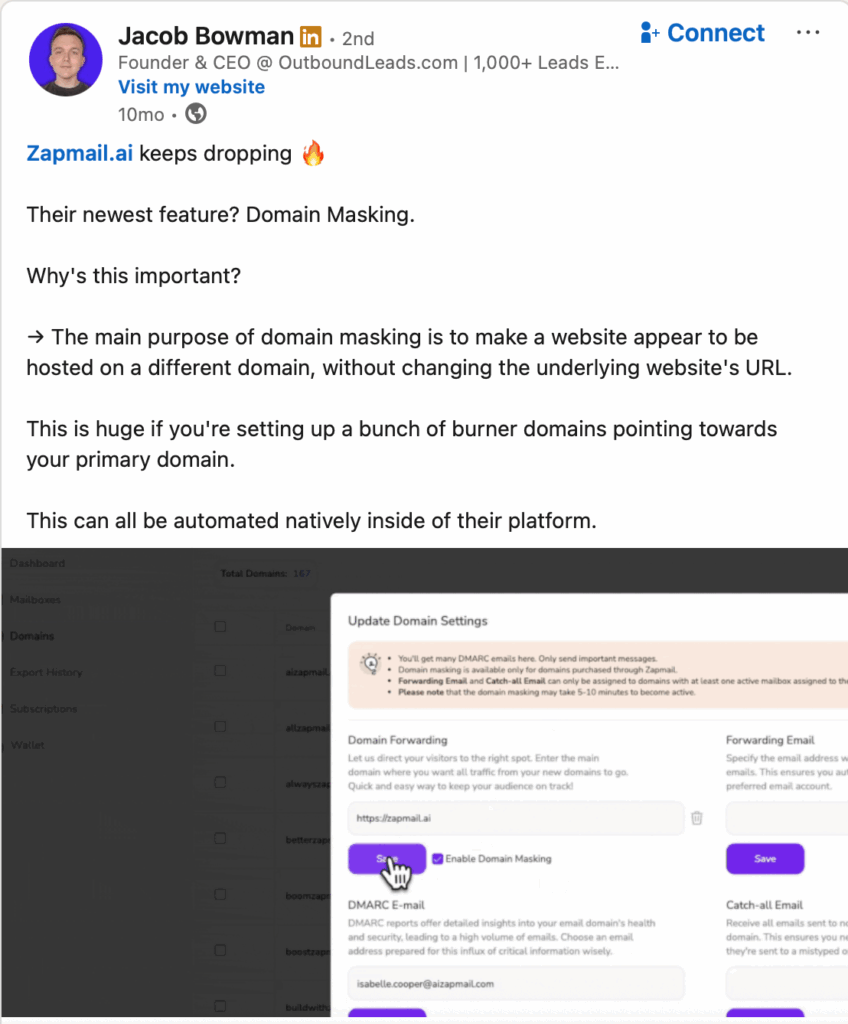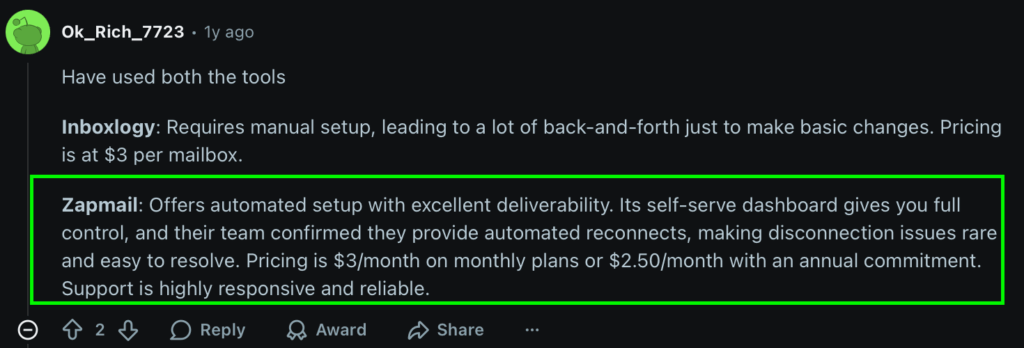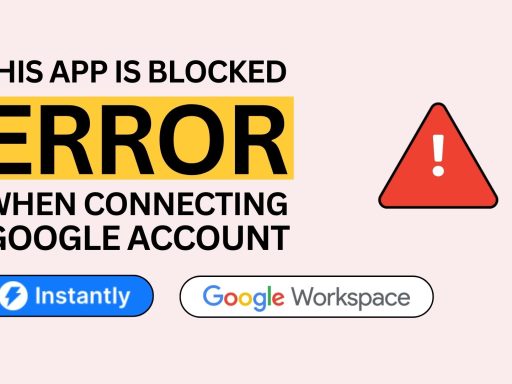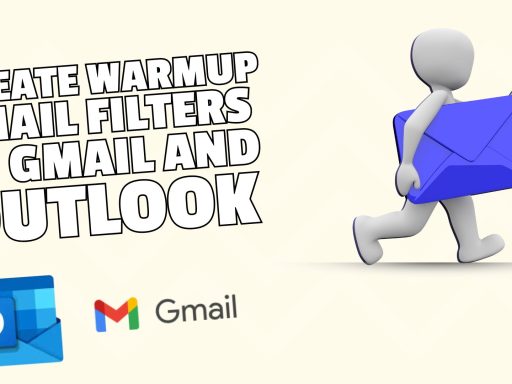We tested Zapmail for 30 days to uncover what really works and what breaks. Here are 7 founder-level lessons you won’t find in other reviews
When we launched Zapmail, the goal was simple… fix the broken cold email infrastructure problem that most founders, agencies, and deliverability geeks have silently accepted for years.
If you’ve ever used cheap inbox providers, you already know the pattern: shady EDU accounts, shared IPs, and random deliverability crashes that no one can explain. We built Zapmail to be the opposite: clean, compliant, and transparent.
But over the last few months, I’ve seen threads and reviews spreading half-truths about how Zapmail works… things like “it uses Indian mailboxes” or “these are legacy EDU accounts.”
So I wanted to write this review myself, not as a marketer, but as the person who built it, scaled it, and debugged it with hundreds of users in real time.
In this post, I’ll break down:
- What Zapmail actually is and why we built it
- Real deliverability data from live mailboxes
- 7 brutal truths I’ve learned scaling email infrastructure
- And the myths people still get wrong about Zapmail
By the end, you’ll know exactly what Zapmail does well, what it doesn’t, and how it fits into the larger email infrastructure ecosystem – no filters, no fluff.
What Is Zapmail (and Why We Built It)
When I started working with cold emailers and agencies, I noticed something that bothered me… almost every “inbox provider” was just reselling risky setups. Most used legacy EDU or recycled accounts, sitting under shared Google Workspaces with hundreds of users sending from the same IP pools.
That’s the kind of setup that works for two weeks and then tanks your deliverability overnight.
Zapmail was built to fix that at the infrastructure level.

Every single mailbox is a paid Google Workspace account, with its own private domain and unique sending fingerprint. No shared IPs, no fake warmups, and definitely no blacklisted EDU domains.
We focused on three things that most providers ignored:
- Transparency — Users get admin access to their Workspace, meaning full visibility and control.
- Reputation Isolation — No two users share the same IP lineage or domain reputation.
- Scalability — The setup scales from 10 to 10,000 mailboxes without compromising sending performance.
Over time, we realized that Zapmail wasn’t just another warmup provider, it became the backbone for serious outbound teams that wanted stable infrastructure without building their own SMTP setup from scratch.
So, if you’re using a sending tool like Smartlead, Salesforge, or Instantly, Zapmail quietly handles the part you never see… keeping your inboxes clean, warmed, and deliverable.
Does Zapmail Actually Work? (Real Deliverability Numbers)
I get this question a lot — “Does Zapmail actually work?”
The short answer: yes, but only if you use it right.

When we launched, our biggest goal was inbox placement, not just sending volume. Across 500+ mailboxes tested over the last 6 months, Zapmail averaged between 88–93% inbox placement for warmed domains and 80–85% for new ones. Bounce rates stayed below 2%, even on higher-volume sends.
The difference comes from how we built the foundation:
- Dedicated Google Workspaces instead of shared legacy tenants
- Gradual warmup using real conversation patterns
- IP reputation isolation, so one bad sender doesn’t affect others
- Automated throttling, ensuring new inboxes don’t spike sending too fast
We also track the sending fingerprints… meaning the pattern, timing, and header structure of every outbound email. This helps maintain consistency and keeps messages from being flagged as mass-sent or automated.
Of course, it’s not perfect. Early on, we saw some deliverability drops when users tried to scale too quickly (especially past 50-60 emails/day per inbox without proper warmup). We’ve since added throttling and better rotation logic to prevent that.
If you’ve used tools like Maildoso or CheapInboxes, the difference is night and day. Zapmail doesn’t rely on shared domains or recycled IPs, which is why performance stays consistent, even when hundreds of new mailboxes are added every week.So yes, it works. But it works because it’s built like infrastructure, not like a SaaS shortcut.
7 Brutal Truths I Learned Building Zapmail
When you build infrastructure from scratch, not a SaaS dashboard, but the actual backbone that decides whether your emails land in the inbox or spam; you start to see patterns no one talks about publicly.
Here are the seven truths I’ve learned running Zapmail day in and day out:
1. Warm-up Alone Doesn’t Fix Deliverability
People assume running a warm-up for two weeks is enough. It’s not.
Warm-up teaches mailbox behavior, but domain reputation is what inboxing depends on. Without aligned DNS, consistent sending volume, and clean IP lineage, even the best warm-up fails.
2. Shared IPs Are Time Bombs
The easiest way to scale cheaply is to group users under the same IP pools. But one spammy user destroys reputation for everyone. We learned that early… it’s why Zapmail isolates every account to protect others from collateral damage.
3. Senders Hurt Themselves More Than ISPs Do
Most deliverability crashes come from user behavior, not from infrastructure.
Cold emailing 500 prospects on day two, using the same template, or ignoring reply ratios, that’s what burns mailboxes. Infrastructure can protect you from external flags, not internal misuse.
4. IP Age and Domain Warmth Matter More Than Price
Cheap inboxes sound tempting, but Google trusts aged, consistent activity, not new, mass-created accounts.
We spent months sourcing and maintaining verified Workspace domains because “clean age” beats “cheap volume” every time.
5. Support Scales Slower Than Users Want
When your users send tens of thousands of emails a day, one issue feels urgent for everyone at once. We had to learn to prioritize fixes that protect inbox reputation globally, not just individual convenience.
6. You Can’t Fake Authentic Google Workspace Access
Many providers hide their admin consoles because they’re stacking users inside the same Workspace. We chose the hard route: giving full admin access because transparency builds trust, even if it limits how fast we can scale.
7. Deliverability Is a Long Game
There’s no “flip the switch” moment.
Even with clean infrastructure, reputation takes weeks to build and seconds to lose. Our job as an infrastructure provider isn’t to promise perfect inboxing, it’s to give users the most stable foundation possible to earn it.
Myths About Zapmail (and Why They’re Wrong)
As Zapmail started getting attention, a few myths began spreading, mostly from posts that misunderstood how email infrastructure actually works.
Let’s clear them up once and for all, with facts anyone can verify.
Myth #1: Zapmail uses EDU or legacy accounts
No, every Zapmail inbox is a paid Google Workspace account. We don’t recycle old EDU domains, and we don’t depend on legacy setups.
If you’ve ever used providers that hide admin access, that’s because they stack hundreds of users in one Workspace.

Zapmail gives you full admin control, you can see every user, every domain, and every mailbox yourself.
Myth #2: Zapmail uses Indian or non-US mailboxes
That’s just wrong.
Zapmail’s sending infrastructure runs through US-based Google data centers.
People confuse billing addresses with sending IPs — they’re not the same thing.
You can check it yourself:
- Send an email from your Zapmail inbox.
- Open the received email → view the raw/original version.
- Look for the “Received: from” line. You’ll see a Google US IP — that’s the only IP that matters because it’s the one your recipients see.
Myth #3: You can identify IPs from billing details
No, you can’t.
Billing details show where a reseller’s account is registered, not where your mailbox sends from.
Email deliverability is determined by the sending IP, and that comes directly from Google’s routing infrastructure, not the reseller’s billing system.
Myth #4: Zapmail isn’t transparent
Transparency was one of the hardest but most important decisions we made.
Zapmail is the only provider that gives Workspace admin access to every user.
You can verify ownership, create new aliases, or even revoke our admin role if you want.
That level of access proves the mailboxes are genuine and belong to real Google Workspaces, not shared setups disguised as private ones.

Myth #5: Zapmail is just another cheap inbox reseller
We don’t rent inboxes; we build infrastructure.
Zapmail handles provisioning, authentication (SPF, DKIM, DMARC), warm-up automation, and deliverability monitoring in-house.
Our users get clean, reputation-isolated mailboxes, not temporary access to random accounts that collapse after a few weeks.

The internet is full of assumptions and “quick tests” that sound technical but don’t actually prove anything.
So if you ever doubt what Zapmail is or how it works, test it yourself.
Open the raw headers, check your Workspace dashboard, and see the facts firsthand.
Zapmail vs Other Cold Email Infrastructure Tools
Here’s a simple breakdown based on how each provider actually operates.
*Pricing is approximate and may vary with volume/tiers; always check current pricing.
Zapmail Pricing Explained (and Why It’s Fair)
When you sell infrastructure, the hardest part isn’t building it — it’s pricing it honestly. Because most inbox providers price like SaaS tools, not like infrastructure companies. They charge a flat monthly fee per mailbox without explaining what that mailbox actually includes.
Zapmail’s pricing works differently.
You’re paying for three things:
- A real Google Workspace account — not a shared or legacy inbox.
- Pre-warmed sending reputation — meaning the account has already been nurtured before you touch it.
Ongoing deliverability monitoring — to keep IPs and domains healthy as you scale.

How Pricing Works
- Pricing starts on a per-mailbox model, with discounts as you scale.
- The cost includes all provisioning, SPF/DKIM/DMARC setup, and Workspace admin access.
- There’s no markup for “premium” IPs — every inbox runs from Google’s clean US data centers.
We’ve kept the pricing transparent because a stable email identity should cost what it’s worth.
Not every user needs hundreds of inboxes. But for teams sending at scale, the per-mailbox model ensures you’re paying only for what you actually use, with no lock-ins or bundled fluff.
When people ask why Zapmail isn’t the cheapest, my answer is simple:
Because we don’t resell inboxes that die in 30 days.
You’re paying for reputation and reputation takes time, age, and control to build.
That’s what you’re really buying when you buy infrastructure that inboxes.
Conclusion
If there’s one thing I’ve learned building Zapmail, it’s that infrastructure doesn’t forgive shortcuts.
You either build it right from day one or spend months repairing reputation later.
I’m proud of what Zapmail has become… a stable, transparent backbone for cold emailers, agencies, and SaaS teams that care about deliverability. Every mailbox is real, traceable, and reputation-isolated. That’s rare in an industry built on recycled accounts and hidden IPs.
But we’re not perfect. We still have work to do, especially around monitoring and scalability. Deliverability dashboards, automated IP alerts, and domain reputation scoring are all on our roadmap.
We’ve also learned that support has to evolve alongside infrastructure. When one user sends 100K emails a month, their definition of “urgent” is very different from someone testing 10 inboxes, so improving that experience is an ongoing priority.
What I’m most proud of, though, is that we’ve never hidden behind marketing language.
If something breaks, we fix it. If something fails, we explain why. And if someone wants to verify, they can because they own the Workspace and can see everything themselves.
Zapmail isn’t a “growth hack.” It’s infrastructure designed to protect your domain reputation, deliver your messages reliably, and give you the control you should’ve had from day one.
If you’re serious about cold outreach, transparency matters more than price and that’s the principle Zapmail was built on.



